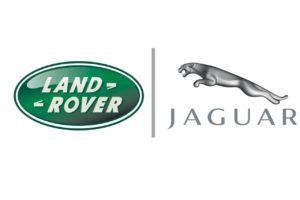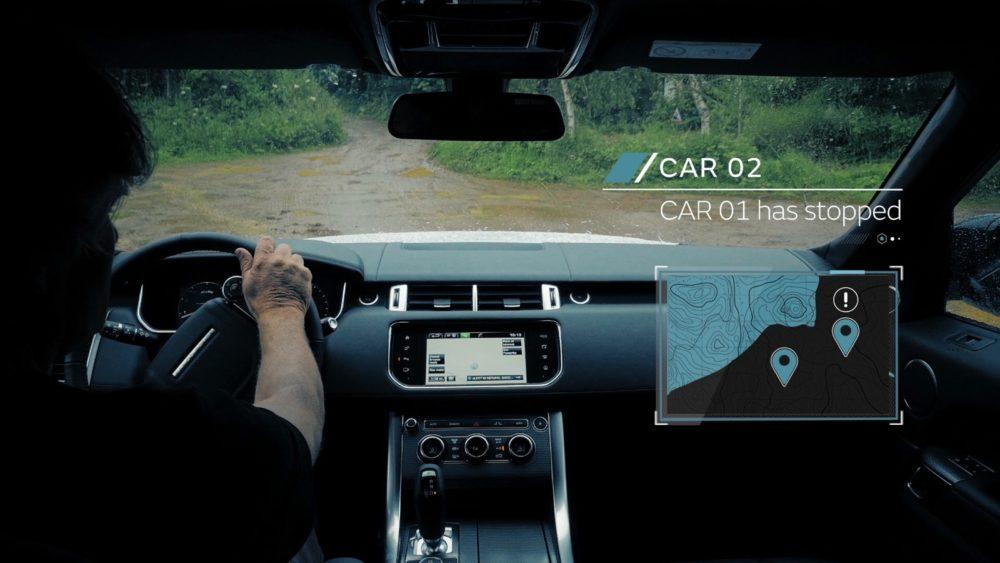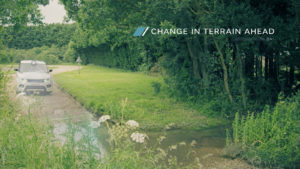 Last week British automobile manufacturer Jaguar Land Rover announced that they were going to start testing their driverless car technology on roads in real world conditions. Over the next four years they will be developing new research vehicles that could road test their new autonomous driving technology. This includes a system that prevents low-speed rear end collisions, the ability to be notified of emergency vehicles before they came close enough to hear the sirens and the ability to detect upcoming road construction and aid in navigating through detours. However the star feature that they plan to test is a feature that would allow cars to talk to each other and warn oncoming cars about upcoming obstacles and road conditions.
Last week British automobile manufacturer Jaguar Land Rover announced that they were going to start testing their driverless car technology on roads in real world conditions. Over the next four years they will be developing new research vehicles that could road test their new autonomous driving technology. This includes a system that prevents low-speed rear end collisions, the ability to be notified of emergency vehicles before they came close enough to hear the sirens and the ability to detect upcoming road construction and aid in navigating through detours. However the star feature that they plan to test is a feature that would allow cars to talk to each other and warn oncoming cars about upcoming obstacles and road conditions.
The ability of cars to talk to each other about upcoming road conditions is only the beginning of what that technology is capable of. Jaguar Land Rover is also using it in their advanced Autonomous All-Terrain Driving Research project that wants to take self-driving cars off of the asphalt. The goal of this research is to make self-driving cars capable of travelling virtually anywhere, both on paved roads and off the beaten path. It would also allow cars to communicate with each other about weather conditions and road hazards, and instruct cars in the best settings for navigating upcoming surfaces. Not only would this help self-driving cars, but it would be invaluable to cars being driven as well.
“We don’t want to limit future highly automated and fully autonomous technologies to tarmac. When the driver turns off the road, we want this support and assistance to continue. So whether it’s a road under construction with cones and a contraflow, a snow-covered road in the mountains or a muddy forest track, this advanced capability would be available to both the driver AND the autonomous car, with the driver able to let the car take control if they were unsure how best to tackle an obstacle or hazard ahead. We are already world-leaders in all-terrain technologies: these research projects will extend that lead still further,” explained the Head of Research at Jaguar Land Rover, Tony Harper.
In order to accomplish this the researchers at Jaguar Land Rover are developing cutting-edge 3D sensing technologies. These sensors will not only be the eyes of the self-driving car, but they will also be able to wirelessly communicate any information that they collect with other nearby cars. These sensors will give autonomous cars a level of artificial intelligence that will allow them to virtually think for themselves so they can plan alternate routes, avoid overly rough or dangerous terrain, and automatically change driving settings based on upcoming road surface changes.
For instance, Car A could run into a patch of road that turns to gravel and have a deep puddle in the middle of it, and would communicate this information to Car B which would prepare the cars all-terrain settings for the gravel road and plan a route that will avoid the puddle. It would even be able to tell the car how fast to be going throughout certain stretches of the road to avoid accidents or collisions.
“The key enabler for autonomous driving on any terrain is to give the car the ability to sense and predict the 3D path it is going to drive through. This means being able to scan and analyse both the surface to be driven on, as well as any hazards above and to the sides of the path ahead. This might include car park barriers, tree roots and boulders or overhanging branches, as well as the materials and topography to be driven on,” Harper continued.
This technology would be especially useful for several vehicles that are travelling off-road together as a convoy. The inter-car communication would allow them the ability to travel at different paces without losing their connection, so even if the drivers can no longer see each other, the cars will still know where the others are. To demonstrate their technology, Jaguar Land Rover connected two Range Rover Sports together with their Dedicated Short Range Communications (DSRC) technology and created the world’s first off-road connected convoy. The vehicle-to-vehicle (V2V) communications system shared even more information than their standard V2V system, including exact location, wheel-slip, suspension height changes and wheel articulation. They can also communicate the Land Rover’s All-Terrain Progress Control (ATPC) and the need to change the vehicle’s Terrain Response settings.
“This V2V communications system can seamlessly link a convoy of vehicles in any off-road environment. If a vehicle has stopped, other vehicles in the convoy will be alerted – if the wheels drop into a hole, or perhaps slip on a difficult boulder, this information is transmitted to all of the other vehicles. In the future, a convoy of autonomous vehicles would use this information to automatically adjust their settings or even change their route to help them tackle the obstacle. Or for the ultimate safari experience, cars following in convoy would be told by the lead car where to slow down and stop for their passengers to take the best photographs,” Harper concluded.
Here is some video of Jaguar researchers explaining how the technology will work. Discuss this topic further over in the Off Road Autonomous Vehicles forum at 3DPB.com.
[Source/Video/Images: Jaguar]
Subscribe to Our Email Newsletter
Stay up-to-date on all the latest news from the 3D printing industry and receive information and offers from third party vendors.
You May Also Like
Gorilla Sports GE’s First 3D Printed Titanium Cast
How do you help a gorilla with a broken arm? Sounds like the start of a bad joke a zookeeper might tell, but it’s an actual dilemma recently faced by...
Nylon 3D Printed Parts Made More Functional with Coatings & Colors
Parts 3D printed from polyamide (PA, Nylon) 12 using powder bed fusion (PBF) are a mainstay in the additive manufacturing (AM) industry. While post-finishing processes have improved the porosity of...
$25M to Back Sintavia’s Largest Expansion of Metal 3D Printing Capacity Since 2019
Sintavia, the digital manufacturing company specializing in mission-critical parts for strategic sectors, announced a $25 million investment to increase its production capacity, the largest expansion to its operations since 2019....
Velo3D Initiates Public Offering in a Bid to Strengthen Financial Foundations and Drive Future Growth
Velo3D (NYSE: VLD) has been among a number of publicly traded 3D printing firms that have attempted to weather the current macroeconomic climate. After posting a challenging financial report for 2023,...



































